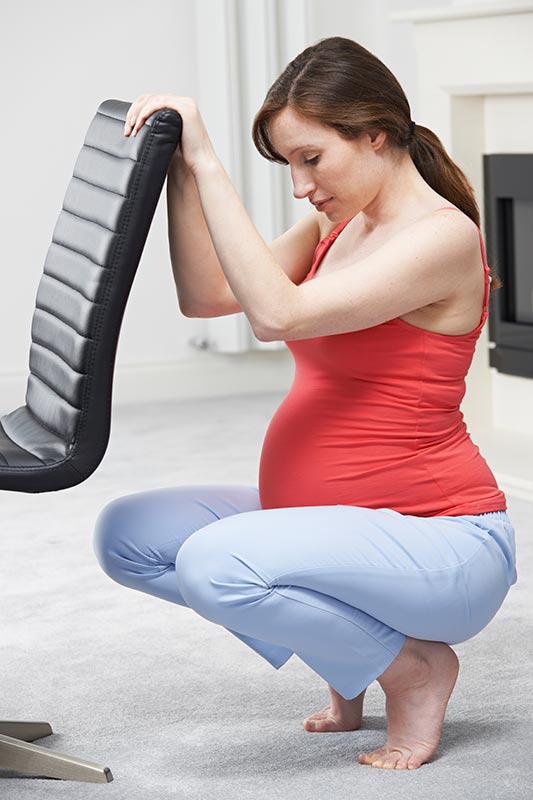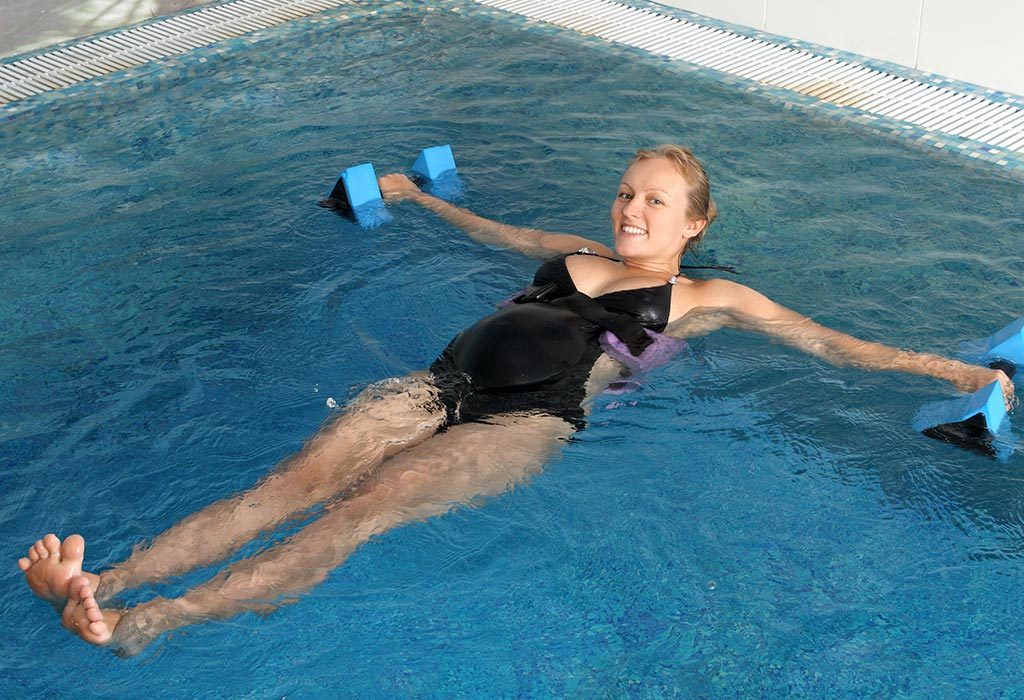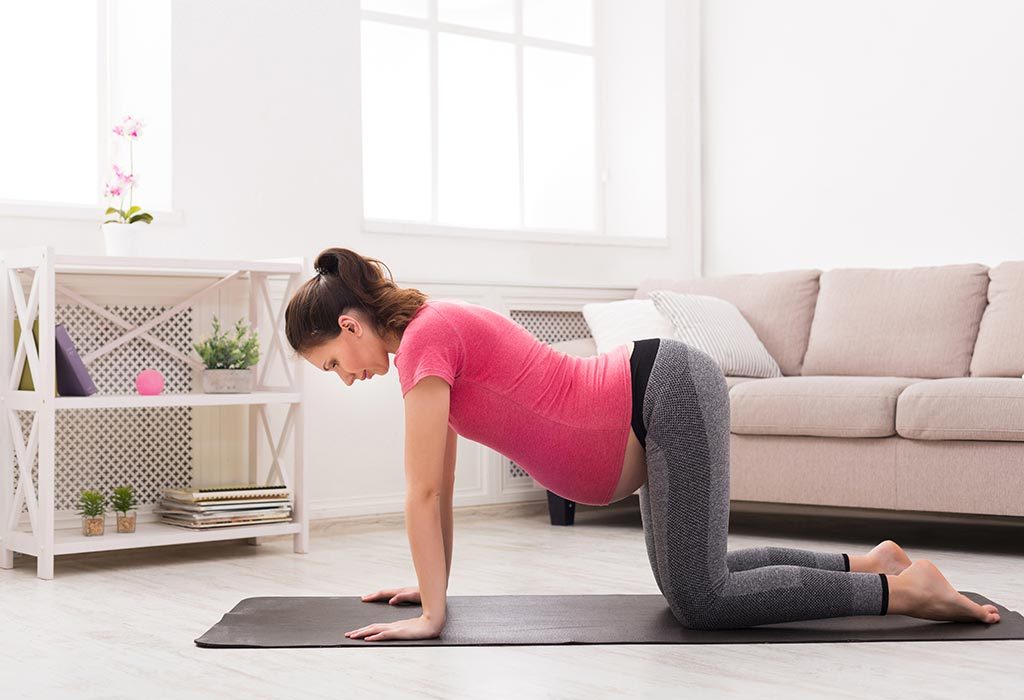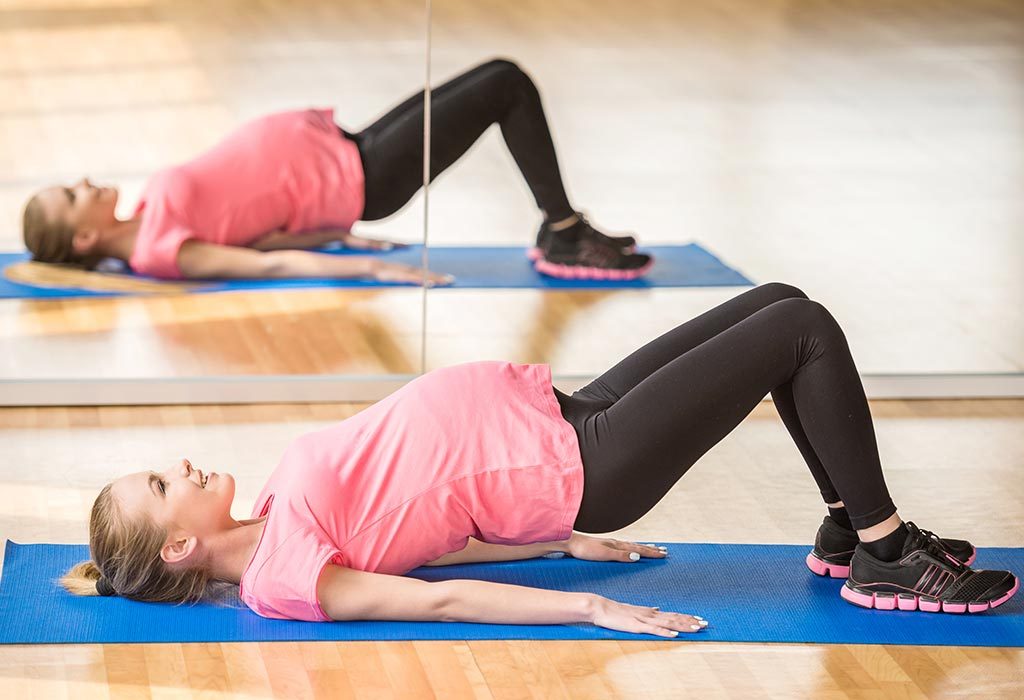In this Article
Exercising in the third trimester of pregnancy helps a pregnant woman prepare for labour and makes delivery hassle-free. If you haven’t exercised throughout your pregnancy, your core body muscles will most likely be weak as they have been accommodating your growing baby in the past few months. Having these muscles in proper form will give you good control during labour contractions.
Precautions to Take While Exercising in the Last Trimester
Here is some general advice before you start your third-trimester exercise at home:
- Refrain from exercises that need you to lie flat on your back.
- Avoid lying on your stomach.
- Keep yourself well hydrated during the exercises.
- Avoid high impact exercises that involve jumping.
- Skip exercises that require standing in one place or in one position for too long.
- Exercises that pose the risk of falling should be avoided.
- Avoid aerobic exercises if you have the following conditions – heart disease, an incompetent cervix, lung disease, multiple pregnancies, placenta previa, preeclampsia, premature contractions, and bleeding during pregnancy.
Exercises to Do During Pregnancy – Third Trimester
Below are some exercises that are safe to perform during the third trimester of pregnancy:
1. Squats

Squatting is one of the best exercises you can do to keep yourself fit, right from the start of your pregnancy up until delivery. Many doctors and midwives make women squat to use the natural force of gravity to move the baby into the lower pelvis and to help it open up. To help you with squats, grab the back of a chair with both hands to stabilize yourself and use a floor mat for some soft cushioning if you need it. Stand in a way that your feet are in line with your shoulders, and the toes point a little off to the sides and not parallel to each other. With the support of your chair, go down while bending your knees and bring your bottom as low as it is comfortable for you. Stay in this position for about 10 seconds, and while still holding the chair, slowly go back into standing position. Repeat this exercise five to seven times. Squats strengthen the muscles in the legs, lower back, and abdomen.
Avoid doing squats if you experience pain in the groin or in the pubic region. If you have placenta previa and there is a risk of rupturing, your doctor will recommend against squats.
2. Swimming and Other Pool Exercises
Do you have a pool at your local club? You need to put it to good use! The buoyancy of water lightens your body and takes the stress off your joints and weak muscles, allowing you to perform exercises which you otherwise cannot do. Before you begin, ensure that you are in water that is at least up to your chest so that it can support your weight. Try these two exercises:

- Back float: The purpose of this exercise is to take the stress off your body and help it relax and recover. When in the water, lean back and bring your legs up while stretching your arms out until you float. As you float, relax and breathe deeply for 2 to 3 minutes to help you unwind.
- Scissor leg stretch: This exercise is good for your groin muscles and the muscles of your inner thigh and lower back. Stand with your back against the wall of the pool and your arms stretched out to the sides, while you grab the edges of the wall. Raise both your legs until they form a rough “L” with your upper body. Now, spread them out in the form of a “V” as far as possible and bring them back together. Do this 10-12 times.
3. Marjaryasana (Cat-Cow Pose)

The cat-cow yoga pose is a gentle exercise that can be performed in the third trimester of pregnancy. The cat pose is effective in relieving lower back pain. It also helps in orienting your baby to the right position for birth. To perform this exercise, start on your hands and knees. Use a floor mat to perform this exercise and avoid stressing your knees. Place your hands and knees in line with your shoulders, and position your head down, facing the floor. Take a breath as you exhale, and arch your back like a cat while pulling your belly up, toward your spine. Your head and hips are pulled in while you maintain the arched position for a few seconds. As you take your next breath, bring your back and hips to the original position. Repeat the exercise five to eight times.
4. Pelvic Floor Exercises
The muscles located in the pelvic floor support organs such as the uterus and control the urinary bladder and vagina. During pregnancy, as your baby grows, the increasing stress on the pelvic floor muscles stretches them. Doing kegel exercises helps in strengthening the muscle group.
To isolate the pelvic floor muscles, try to stop the flow of urine while you are urinating. The muscles you contracted to stop the urine are the pelvic floor muscles. To exercise them, try these:

- Rapid contractions: Contract the muscles fast and forcefully; draw them inward and up and relax. Start with 10 repetitions, and go up to 50.
- Slow holds: As you advance in strengthening the muscles, increase the force with which you contract the muscles and pull them up higher while holding the contractions for five counts. Do these about 15 times.
5. Walking and Stair Climbing
Walking is the easiest of all the exercises, especially when you cannot do the other exercises. Walking will help you stay fit throughout your pregnancy. All you really need for it is a pair of comfortable shoes and a sidewalk or a park. Walking is a low-impact exercise and is one of the safest exercises during pregnancy. It can be done even when a woman is 38 weeks pregnant. Just walk at a comfortable pace.

Stair climbing is also a great exercise that is good for a woman’s lower body, as it strengthens the muscles which later make the delivery process easier. Ensure the stairs you are taking aren’t steep and have railing support so you can climb safely.
6. Yoga
Low-impact exercises are incredibly beneficial for pregnant women in their third trimester, and yoga is one such exercise. Not only do the stretches help relax and tone the various muscles in the body, but the relaxation techniques practised in yoga can help the mother-to-be remain calm. An important thing to remember is: it’s best to practice yoga with an instructor who specialises in training women during pregnancy.
Warning Signs to Watch out for
If, at any point during your workout session, you notice the following symptoms, stop and contact your doctor immediately. Some of the warning signs are:
- Leaking amniotic fluid
- Feeling dizzy, lightheaded, or nauseous
- Pain in the chest
- A rapid heartbeat that won’t slow down
- Shortness of breath
- Pain in your calf muscles, or sudden swelling of legs
- Vaginal bleeding
- A severe headache
- Intense abdominal pain
- Sudden contractions that won’t stop before the 36th week of pregnancy
- Baby doesn’t kick much or has stopped kicking
Third-trimester pregnancy exercises, when performed with caution, can keep you physically fit while helping you with your delivery. So, try these exercises – and if you feel even a tad uncomfortable, stop immediately. You can even consult your doctor before starting with any of these exercises.
Resources and References: Lamaze, Healthline









